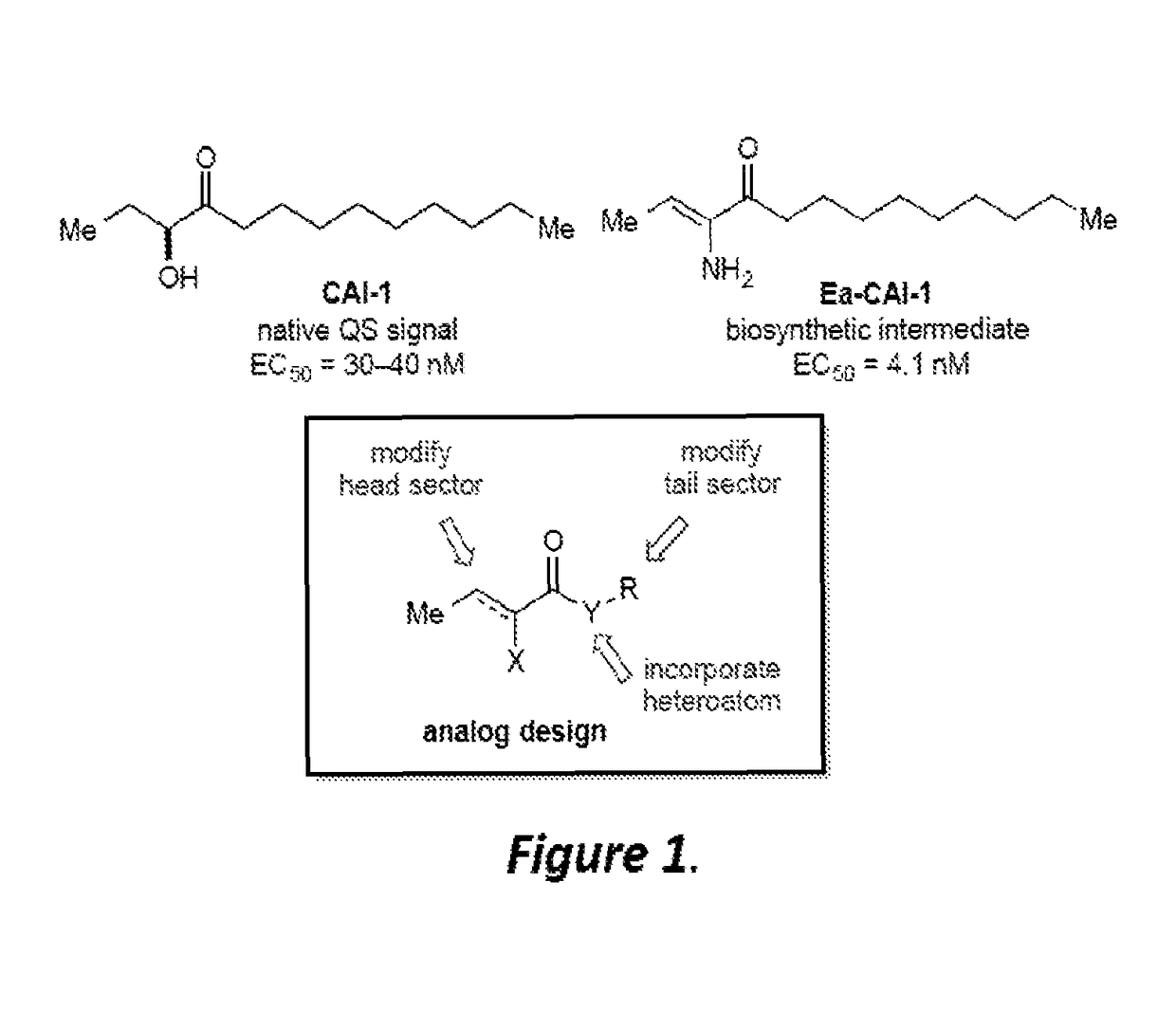Heterocycle analogs of CAI-1 as agonists of quorum sensing in vibrio
a heterocyclic compound and quorum sensing technology, applied in the field of bacterial cell cell communication, can solve problems such as diarrhea, and achieve the effect of inhibiting the virulence of these bacteria and reducing the likelihood of infection
- Summary
- Abstract
- Description
- Claims
- Application Information
AI Technical Summary
Benefits of technology
Problems solved by technology
Method used
Image
Examples
Embodiment Construction
[0029]In V. cholerae, the native QS signal is CAI-1 ((S)-3-hydroxytridecan-4-one). Ea-CAI-1 is an intermediate in the CAI-1 biosynthetic pathway. Ea-CAI-1 is less chemically stable than CAI-1 but is an order of magnitude more potent as a QS agonist than the native, longer-lived CAI-1. With an aim to determine target structures that achieve higher potency and improved chemical stability over the native QS signal in V. cholerae, a series of analogs of Ea-CAI-1 were synthesized (FIG. 1).
[0030]Using rational molecule design principles based on a wealth of structure-activity relationships (SAR), a structurally distinct and potent series of synthetic small molecule modulators of quorum sensing were identified which cause repression of virulence factor expression and biofilm formation in pathogenic bacteria. The molecules may be employed to affect QS behaviors of V. cholerae or other pathogenic bacteria that utilize V. cholerae-type quorum sensing circuits such as Legionella species. (e.g....
PUM
| Property | Measurement | Unit |
|---|---|---|
| temperature | aaaaa | aaaaa |
| structures | aaaaa | aaaaa |
| cell densities | aaaaa | aaaaa |
Abstract
Description
Claims
Application Information
 Login to View More
Login to View More - R&D
- Intellectual Property
- Life Sciences
- Materials
- Tech Scout
- Unparalleled Data Quality
- Higher Quality Content
- 60% Fewer Hallucinations
Browse by: Latest US Patents, China's latest patents, Technical Efficacy Thesaurus, Application Domain, Technology Topic, Popular Technical Reports.
© 2025 PatSnap. All rights reserved.Legal|Privacy policy|Modern Slavery Act Transparency Statement|Sitemap|About US| Contact US: help@patsnap.com



